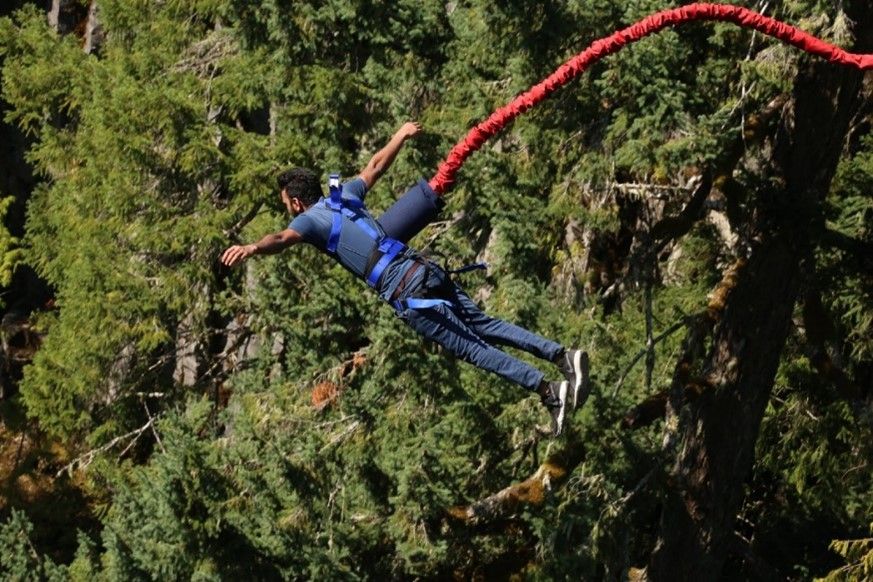Creating psychological safety is like bungee jumping
Last week I organized a Personal Development weekend for about 25 colleagues. The topic of the weekend was setting and extending boundaries. We knew some vulnerable stories might come up, so we needed to create an atmosphere of psychological safety. During the weekend I noticed that it was hard for people to take the first step, and this got me thinking about bungee jumping and teamwork.
What is psychological safety?
Psychological safety means being able to say what you want to say, however hard, because you know it will be taken in the right way. Having psychological safety is the main driver for high performance in teams.
The thing with psychological safety is that it doesn’t come automatically. Someone has to start, someone has to be the first one to test the waters and prove to the others that it is actually safe. And this is where bungee jumping comes in.
In bungee jumping, the free fall is the scariest part. It fills you with adrenaline, and you’re not sure whether the elastic will hold you. Then slowly but surely, you feel the harness tightening. You feel the support of the bungee cord, and after bouncing up and down a few times you’re hanging there. Safe and supported.

This is a perfect metaphor for creating psychological safety. Because telling a deeply personal story, sharing your real opinion about something, or going against the stream can be scary.
You think: "What if they don't like me when I say this? What if they laugh at me? What if they think I'm overreacting?". While you’re talking, sharing, and being vulnerable the adrenaline is coursing through your body. You’re anxious, and not sure of how people will react.
Then slowly but surely, you see that people are engaged. You make eye contact, you might see emotions or recognition in their eyes as well. You’re connected and they’re living this with you. Like the bungee cord coming under tension, you feel that you are supported. And by the end of your story, you’re sure that you are safe in this environment. That your peers are holding you up (hopefully not by your ankles).
Why is it so hard to go first?
The most challenging part, of course, is that someone needs to go first. Someone needs to be the first one to jump off that bridge. And taking that risk of going where no one has gone before is scary. It can be literally life-threatening.
Doing a bungee jump when you’ve seen 10 or 20 people go before you is still scary. But being the first one can feel literally life-threatening. But being the first one is also the most valuable, because you’re paving the way for everyone else to jump.
How does this translate to teamwork?
Within teams, psychological safety is needed to get the best results. It means that the junior developer feels safe to say to the senior developer that there's a better solution. It means that people speak out about the real issues in retrospectives, or that they can say that they're not doing well and need a break.
Conclusion
So kudo’s to the people that are willing to be live crash test dummies. The people that jump even though they’re not sure whether the bungee cord will hold them. They put their own psychological safety on the line for the benefit of everyone else and deserve your respect.
If it's not you yet that goes first, maybe take the next opportunity. Remember that going first can open the door for other people to jump as well and take the leap of faith.
If you're on the receiving end of someone who takes the risk of going first, treat what they share with respect.
And if you are guiding a group where safety needs to be created, but people say that they don’t feel safe enough to share yet, think of this analogy. Explain that someone needs to go first for it to become safe. Invite them to take a leap of faith, and trust that someone will answer.
